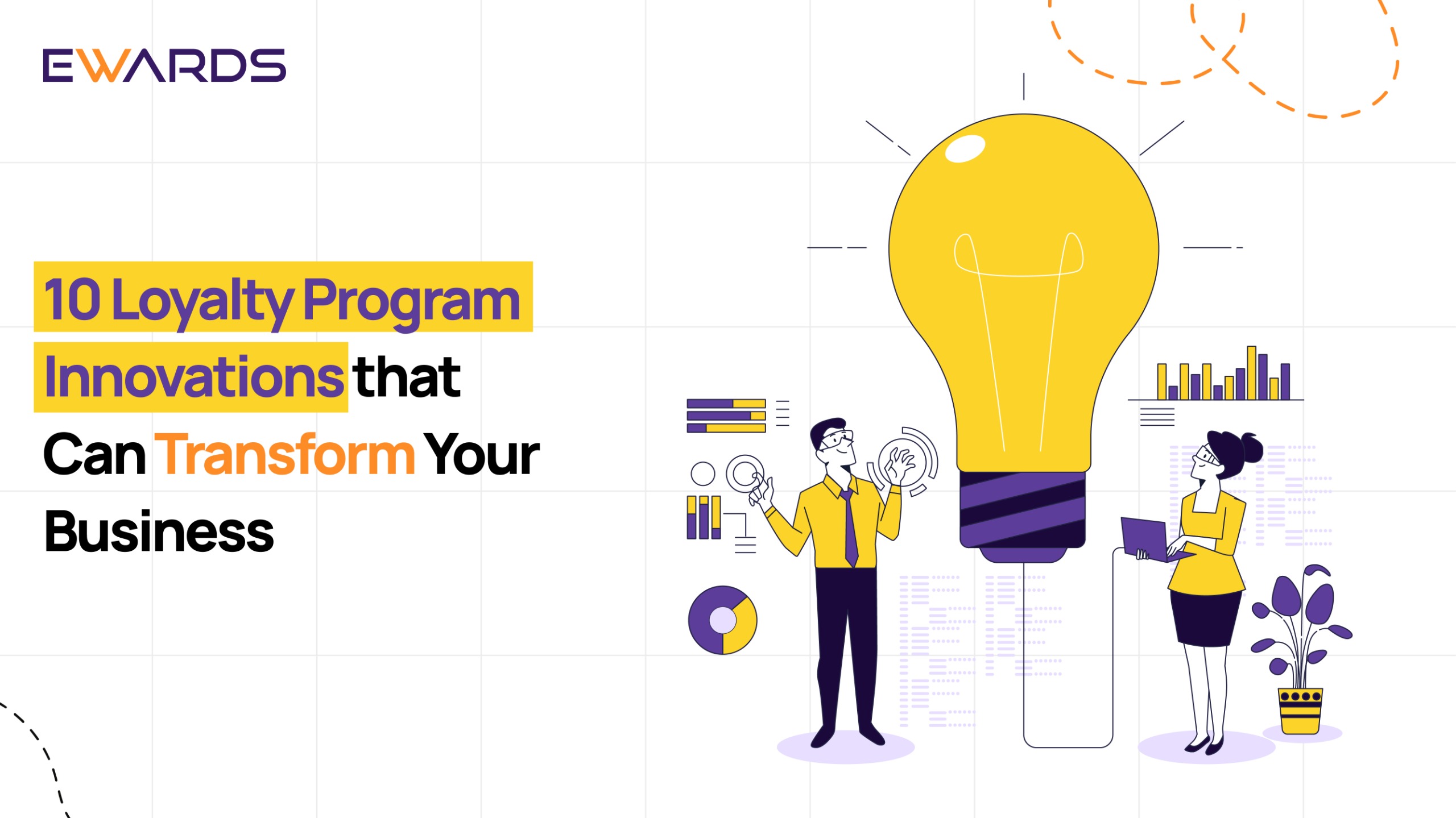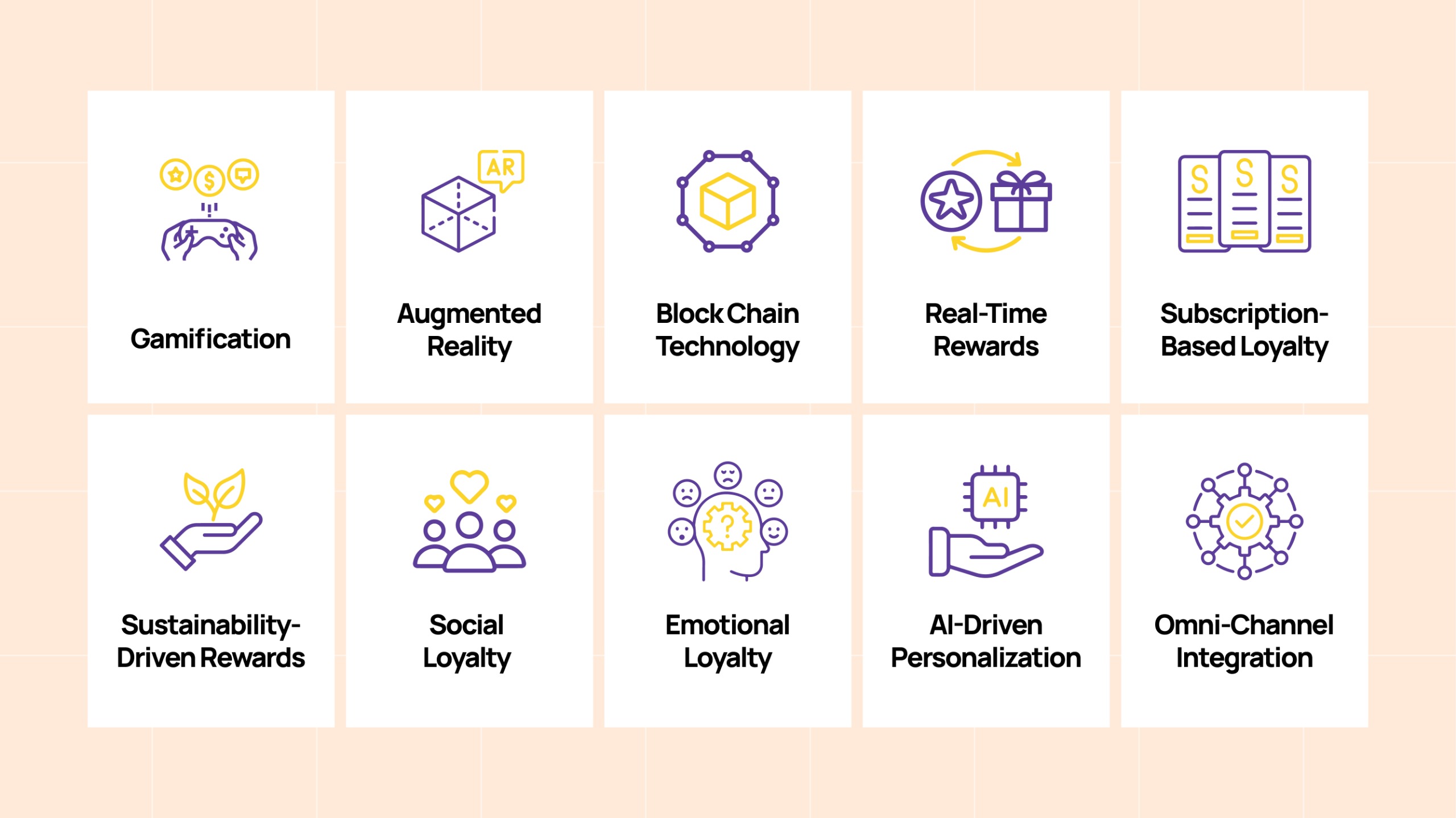
What if we told you that Loyalty Innovations could skyrocket your sales?
Is your loyalty program keeping up with the times—or falling behind?
With economic pressures mounting, consumer behaviors shifting faster than ever, and personalization now a non-negotiable, loyalty strategies are at a tipping point. What was once a simple tool for encouraging repeat purchases has evolved into a high-impact growth engine that drives profitability, sets brands apart, and builds unshakable equity.
The question is: Are you ready to embrace the future of loyalty and unlock its true potential?
According to Marketing Metrics, a business has a 60-70% chance of selling a product to the existing customer while the prospect for the new is just about 5-20%. This means that companies with the most solid Loyalty Programs have better chances of revenue growth. Yet, only a fraction of these programs truly leverage innovation to achieve this.
In this blog, we will explore 10 transformative innovations that are shaping loyalty programs while also dissecting their impact across industries, markets, and consumer trends.

Image: Top Innovations Observed in Loyalty Program
Source: (eWards)
1. Gamification – Engaging Customers Through Play
According to the Cognitive Bias theory of Loss Aversion, individuals perceive a potential loss as more emotionally and psychologically severe when compared to an equivalent gain. Thus, by gamification of loyalty programs, brands can create habit loops that push customers to make regular engagement and deal with their FOMO. This strategy works because it taps into the intrinsic motivating factors of an individual like achievement and success.
Data Insight: A study by Markets and Markets showed that the global gamification market is projected to reach $30.7 billion by 2025.
Example: The Nike Run Club integrates fitness challenges, rewarding users with badges and milestone celebrations. This approach not only fosters loyalty but positions Nike as a lifestyle partner.
2. Augmented Reality (AR) in Loyalty Program
It enhances customer engagement by blending the digital and physical worlds. Through AR, customers can interact with products or services in a more immersive way, such as virtually trying on items, scanning packaging for rewards, or unlocking special offers via AR experiences. This innovative approach makes the loyalty program more interactive, personalized, and fun, increasing customer participation and satisfaction.
Example: Sephora integrated AR into its loyalty program, Beauty Insider, which allows customers to use their points to access exclusive AR filters and effects on Instagram, Snapchat, or Facebook Messenger.
3. Integration of Block Chain Technology
Blockchain technology is a decentralized digital ledger system that securely records transactions across multiple computers. It allows data to be stored in “blocks” linked together in a chain, making it nearly impossible to alter or tamper with the data without detection. Thus, adding this technology addresses loyalty’s long-standing inefficiencies, such as fraud, lack of transparency, and limited point portability.
Blockchain-based loyalty programs reduce fraud-related losses, while simplifying cross-brand collaborations, enabling economies of scale.
Example: Singapore Airlines’ KrisPay allows users to redeem miles at retail partners using blockchain, demonstrating how technology fosters seamless interoperability.
4. Real-Time Rewards
According to the concept of Attention Economy — human attention is a scarce and valuable resource, and businesses or content creators must compete to capture and retain it. In a world where people are constantly bombarded with information from various sources (social media, advertisements, emails, etc.), the ability to capture and hold someone’s attention has become a key driver of success. In such a time, immediate gratification trumps delayed rewards. Real-time rewards keep customers engaged when it matters most.
Data Insight: According to Reward the World, businesses that offer instant rewards usually see up to a 40% increase in their engagement rates and a 30% increase in their customer retention rates.
Example: Instant rewards post-purchase, such as McDonald’s surprise freebies.
5. Subscription-Based Loyalty
Subscription models turn loyalty into a profit center by generating recurring revenue, providing steady and predictable income. Customers commit to regular payments (monthly or yearly) for continued access to products or services, creating a sense of long-term value and exclusivity.
The LTV (Lifetime Value) vs. CAC (Customer Acquisition Cost) framework highlights profitability in subscription models. LTV represents the total revenue from a customer, while CAC covers the cost of acquiring them. Subscription models increase LTV as customers continue to pay over time, offsetting the initial CAC. This reduces reliance on constant customer acquisition and ensures long-term profitability by focusing on customer retention, creating a sustainable and lower-risk business model.
Example: Amazon Prime generates $25.21 billion in annual subscription revenue while increasing purchase frequency by 35%.
6. Sustainability-Driven Rewards
One of the best ways to retain value-driven customers was to incorporate Environmental, Social, and Governance principles in the loyalty program. It encouraged the customers to engage in sustainable behaviors and support ethical business practices. These programs align customer loyalty with sustainability goals by offering rewards for actions that contribute to environmental and social well-being. By incorporating ESG principles, businesses not only build stronger relationships with environmentally conscious consumers but also position themselves as responsible brands.
Data Insight: From the study conducted by First Insight, 62% of Gen Z shoppers prefer to buy from brands that follow sustainability practices and 73% of them are even willing to pay more for sustainable products.
Example: The H&M recycling initiative rewards users for their eco-friendly behavior.
7. Social Loyalty
Social loyalty taps into the power of network effects, where customers help promote a brand through their social connections. Businesses turn their loyal customers into brand advocates by rewarding customers for actions like sharing, tagging, or recommending the brand on social media. This not only strengthens retention by encouraging continued engagement but also drives organic customer acquisition as these social actions reach new audiences, expanding brand awareness and attracting potential customers without additional advertising costs.
Example: Dropbox’s referral-based program generated a 60% growth in user base, proving the scalability of social loyalty.
8. Emotional Loyalty
Emotional loyalty taps into the principles of behavioral economics, focusing on customers’ emotions, values, and aspirations to build deeper, long-lasting relationships. Rather than just offering rewards or discounts, it involves connecting with customers on a personal level by aligning with their beliefs, desires, and lifestyles. This approach creates a stronger emotional bond between the brand and the customer, encouraging repeat purchases, advocacy, and a sense of belonging. Emotional loyalty drives customers to make decisions based on trust and emotional connection rather than just transactional factors, making it a powerful strategy for sustaining brand loyalty and increasing lifetime value.
Data Insights: According to a Harvard Business Review Study, customers who are emotionally connected to a brand are 52% more valuable when compared to customers who are just satisfied.
Example: Patagonia builds loyalty around sustainability, turning environmentally conscious customers into lifelong advocates.
9. AI-Driven Personalization
Artificial Intelligence (AI) enables mass customization, which means that it delivers unique customer experiences at scale. This capability resonates with the modern consumer’s expectation for relevance, transforming loyalty into a value-driven relationship. By incorporating AI in loyalty programs, individuals receive rewards based on their purchase behavior and preferences highlighting personalization.
Data Insight: A 2021 McKinsey & Company study highlighted that 71% of customers expect companies to deliver personalized interactions, and 76% get frustrated when this expectation is unmet.
Example: Starbucks uses AI to predict customer preferences, sending targeted offers that increase basket sizes.
10. Omni-Channel Integration
Omni-channel integration ensures customers can earn and redeem rewards seamlessly across all channels—online, in-store, mobile, and more. It provides a consistent and unified experience, allowing customers to engage with the loyalty program anytime, anywhere, enhancing convenience, satisfaction, and brand loyalty.
Data Insight: According to a study conducted by IDC, shoppers interact with a brand at more than one channel and these shoppers have a 30% higher lifetime value compared to those who shop using one channel only.
Example: Sephora’s Beauty Insider program allows customers to earn and redeem points across apps, the web, and stores, creating a unified experience.
Conclusion – Innovation Shapes Loyalty
The changing loyalty landscape is a testament to how far customer engagement strategies have come—from transactional points systems to transformative, value-driven experiences. These innovations highlight a crucial shift: loyalty is no longer just about retention—it’s about fostering authentic, lasting relationships that drive sustainable growth and differentiation.
For loyalty experts, the challenge is clear: move beyond the ordinary. Customers today demand seamless, meaningful, and tailored experiences. The opportunity? To create loyalty programs that delight customers and reinforce your brand as an indispensable part of their lives.
